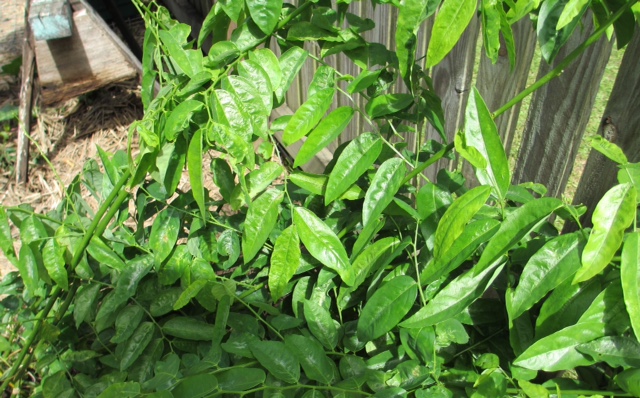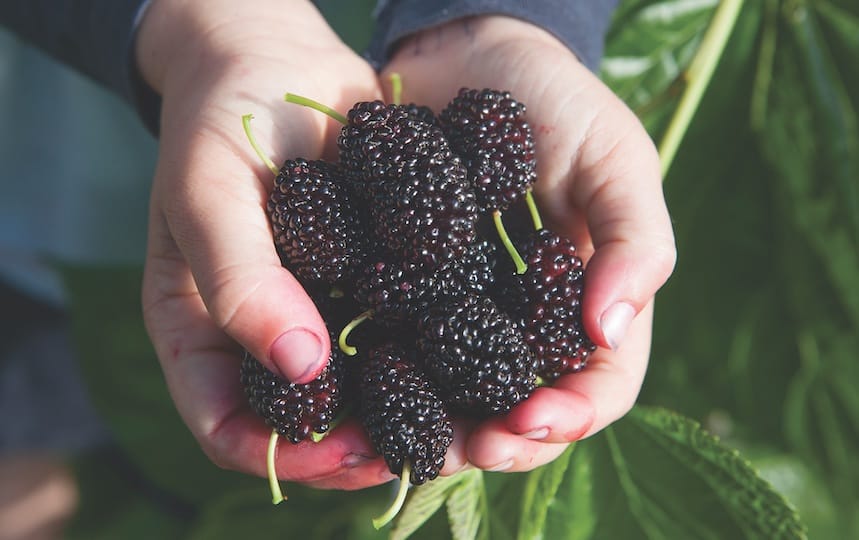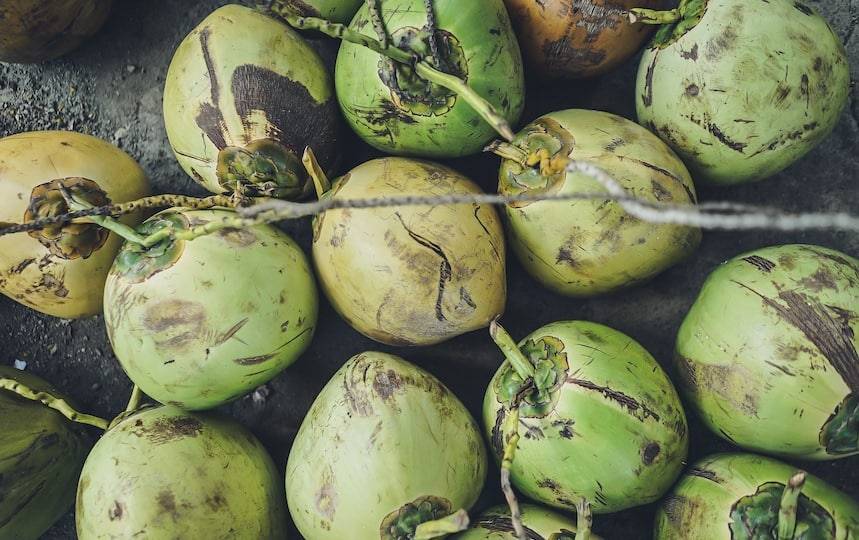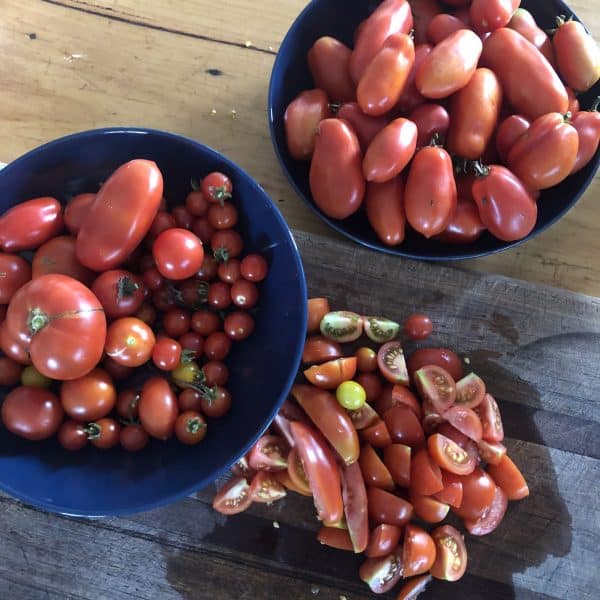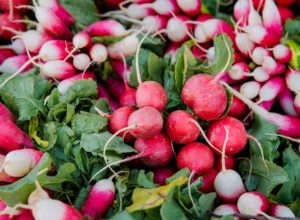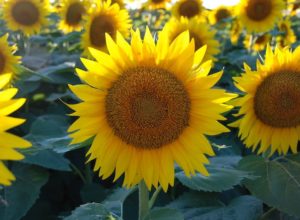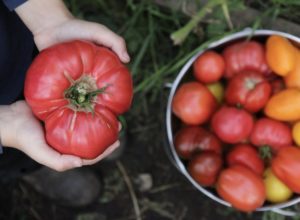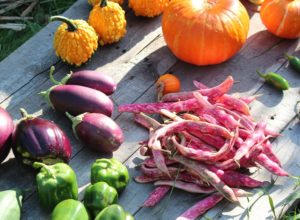Live in a tropical climate region of Australia? Our February Garden Guide will tell you what you should be planting throughout the month.
Before we get stuck into our February guide guide for tropical climate regions, for a Mediterranean climate see this February garden guide and if you’re in a cool temperate climate see this February garden guide.
Now onto the tropical climate garden…
What To Plant?
All the plantings for January apply to February if you didn’t get around to them then.
Separate clumps of garlic chives and onion chives and plant them out. These will grow into clumps and I cannot have too many chives. I use them instead of onions in many dishes.
Replant the mints or wait until after the wet season as mint does not cope with the high. humidity. Egyptian mint seems to handle the heat and humidity better than the others.
Maintenance
Fertilise, mulch and plant green manure crops as for January.
Thin out the banana suckers. These can be removed and composted or removed and planted elsewhere. Remember there are strict rules about home banana growing and these rules vary from state to territory.
Cover any fruit that may be sunburned if left exposed. Pineapples can be covered lightly or make sure there are some weeds growing around them to provide protection. Rodents can be a problem if left to their own devices. The neighbour’s cat may be an effective deterrent.
Use heavy rain events to identify areas where the drainage is not as good as it could be. We had a very heavy rain event and now I am digging swales and bunding the potting area. I was aware of the need for the work but just hadn’t done it yet. I am blaming the hot weather and the tennis.
Prune the mulberry tree. In the tropics mulberry do not grow into big sturdy trees with regular fruiting cycles. Mulberry in the tropics stays as a shrub which fruits on the new growth after pruning. Cut it back to the same height each time rather in the same manner as pollarding. I cut back to about waist height so that I can reach the fruit.
Weeds, Pests, and Disease
Continue weeding and mulching.
The extreme heat has killed a few of the normally heat tolerant greens so remove and compost plants or leave them as bug food. The weak plant will attract the predators so leaving your healthy and productive plants to flourish.
Check for areas where the mulch has been washed away and observe to see what is happening and this will tell you how to remedy the problem.
Keep an eye out for neat circles cut out of leaves. This is the action of the leaf cutter bees.
Harvest and Preserve
Harvest the fruit from the white eggplant, okra, and capsicum. The capsicum plants have just succumbed to the heat and humidity this January. Very hot, humid and dry with one huge rain event that caused flooding in the low lying areas.
Harvest chives by cutting them at ground level.
Harvest early rosella to make a jam. The young leaves can be harvested during the growing season and added to salads for a tart flavour burst.
Sweet leaf and sweet potato leaves are the mainstay of the salad and green vegetable in this weather.
Harvest the leaves and stems of the taros for a cooked green vegetable which goes well with coconut. Coconuts are also available for harvest.
Featured Permaculture Principle: Catch and Store Energy
(Read more about this principle here.)
I love this principle. I have a 55,000 litre water tank which harvests the water from the roof of the house. It is only a little house but fills the tank in no time. The size of the tank was determined by the area available and the amount of water I use in six months.
In the dry tropics it is not unusual to go for 6 months without any rain at all. The runoff from the shed goes into a bog garden which is still in the process of being developed.
The greywater goes into a smaller bog garden and produces abundant mulch.
My freezer is full of tomatoes harvested from the plants which grow themselves all over the place.
Mangoes are the main fruit I eat so have some frozen but most are dehydrated. I don’t harvest my own but buy the seconds cheaply from a farm where they have motion sensitive cameras set up to take photos of the micro bats living in the banana patch. My kind of farm.
My weeds are harvested as mulch. In fact I have reframed them from weeds, a problem, to mulch or compost waiting to be harvested, an asset.
The solar system on the roof catches and stores energy and gives me a return. It also has the potential to be independent with the addition of a battery system.
The sun grows the duckweed and algae which feed the fish. I sell the duckweed and the guppies with no more effort than harvesting them once a week.
By growing and selling edible plants to suit the climate I am maximising the amount of energy which can be stored and harvested in this environment.
Use swales and bunds to direct the water to where it is needed and around areas where it is not needed.
The whole block is surrounded with a plastic strip which stops water runoff from the block and allows it to soak into the ground where it is stored as groundwater. The swales and mulch also facilitate this water storage by directing water and by reducing evaporation from the soil surface.

